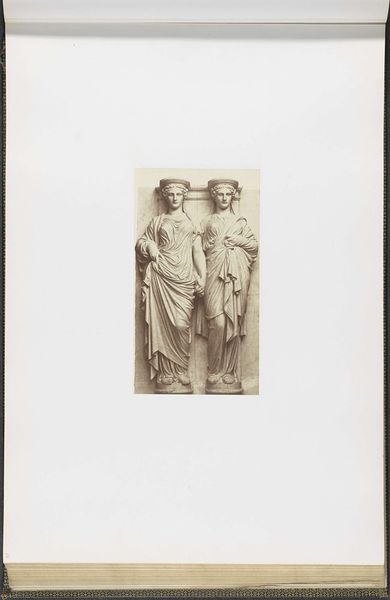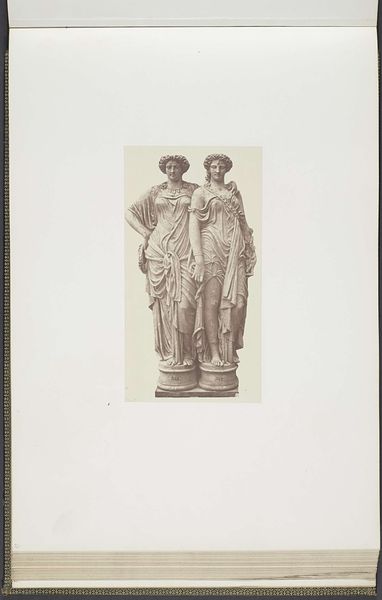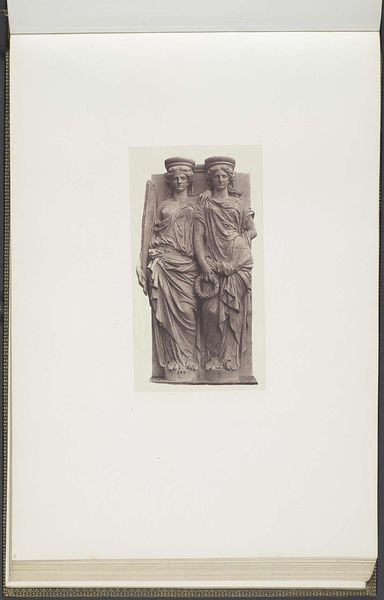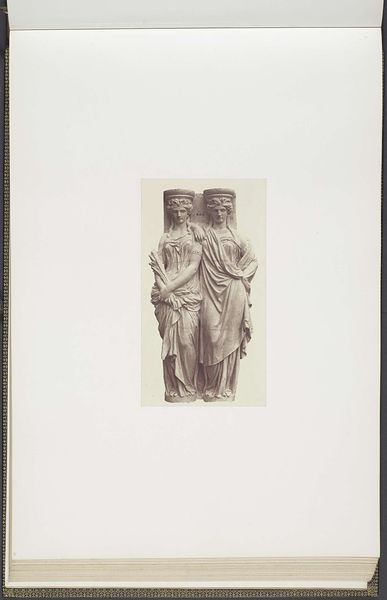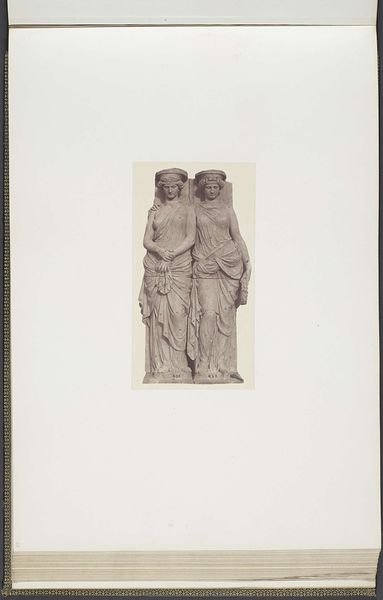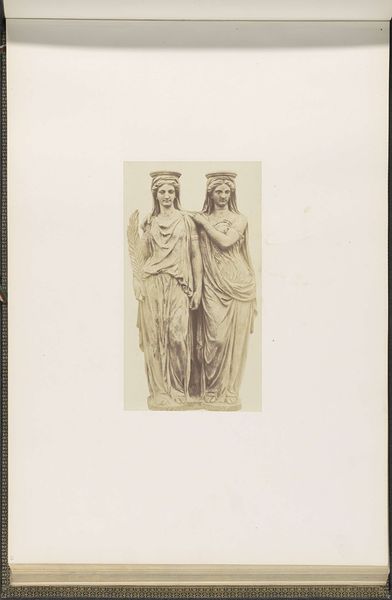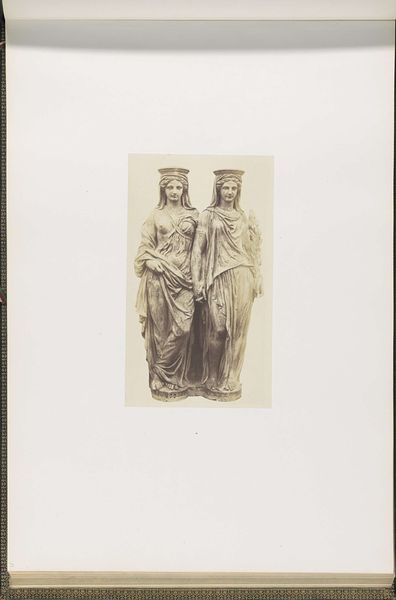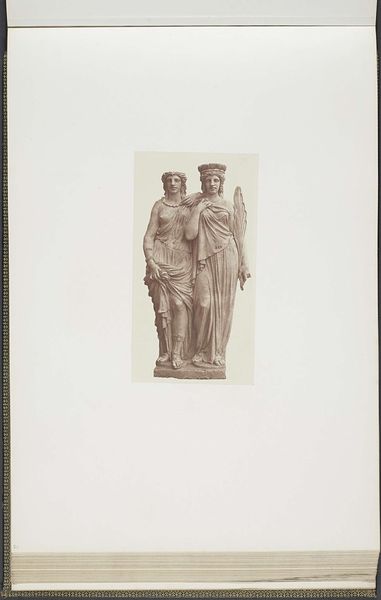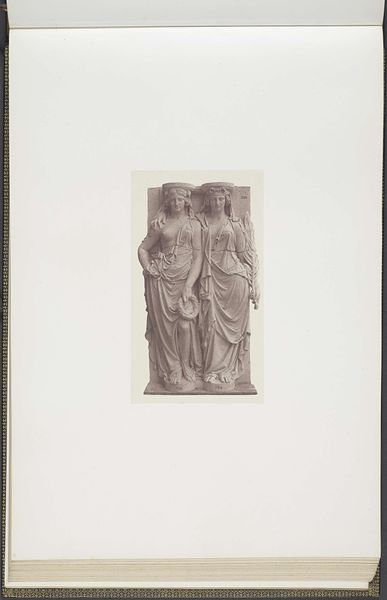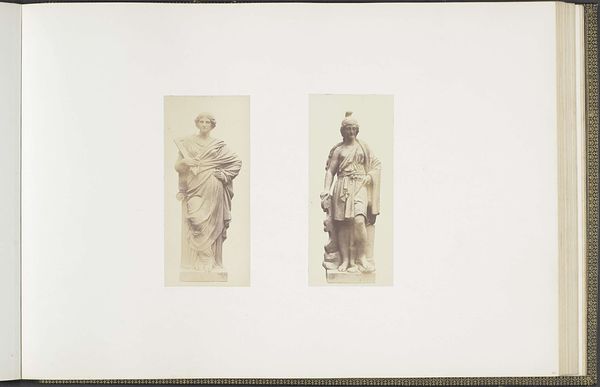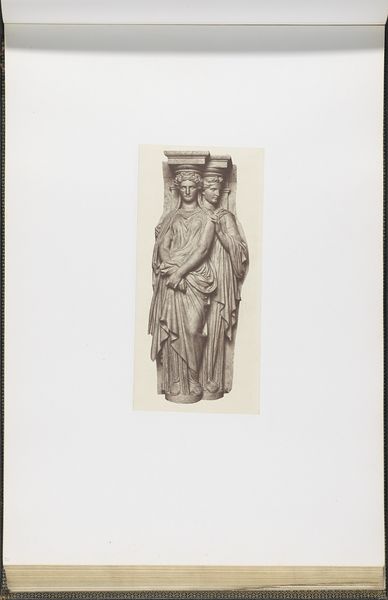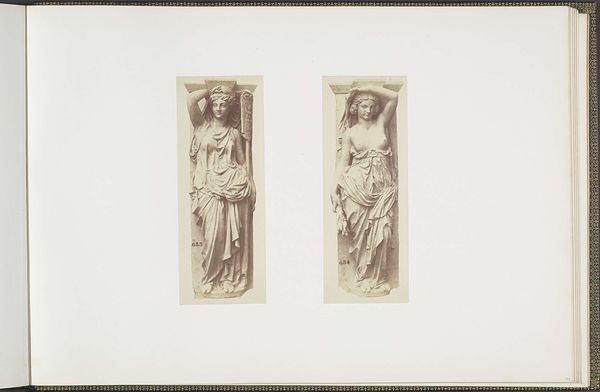
Gipsmodellen voor kariatiden op het Palais du Louvre door Pierre Charles Simart c. 1855 - 1857
0:00
0:00
bronze, photography, sculpture
#
portrait
#
neoclacissism
#
sculpture
#
classical-realism
#
bronze
#
photography
#
ancient-mediterranean
#
sculpture
#
history-painting
#
academic-art
#
statue
Dimensions: height 382 mm, width 560 mm
Copyright: Rijks Museum: Open Domain
Editor: Here we have a photograph from around 1855-1857, "Gipsmodellen voor kariatiden op het Palais du Louvre door Pierre Charles Simart," credited to Edouard Baldus. They're gypsum models, presumably studies for the Louvre caryatids, which presents a neoclassical composition with this somewhat dreamlike quality that you often find in early photography. How do you read it? Curator: It makes me think about time. Here we have these eternal figures, these stoic guardians of classical ideals, captured by this brand new technology. Photography, in its infancy, trying to hold onto and preserve these fading notions. Does it feel elegiac to you, that sense of something beautiful slipping away? Editor: I think so! There is something almost…sepulchral about it, like an elaborate gravestone. They’re holding up the Louvre, yet they themselves are frozen in time. Were photographs often used in this way? As documentation for other artworks? Curator: Absolutely. Think of Baldus, hired to document the construction of the "new" Louvre. Photography became a tool of empire, of cataloging, and, yes, even memorializing. It's odd to consider these sculptures being ‘documented,’ as though their reality was somehow enhanced by being captured on film. But that, perhaps, speaks to our relationship with the "real" – isn't it? Editor: So, in a way, the photograph elevates the sculpture by presenting a new, documented version? Curator: Precisely. A ghostly echo that claims a truth of its own. Do you find that the softness of the photography changes how you view the cold marble-esque statues? Editor: Definitely, it almost softens them and allows me to feel like there’s humanity and expression in their faces, while it seems impossible to see them without this. Thanks for opening my eyes to that! Curator: My pleasure! And thank you for helping me see the elegiac beauty anew, like a shared whisper across the ages.
Comments
No comments
Be the first to comment and join the conversation on the ultimate creative platform.
